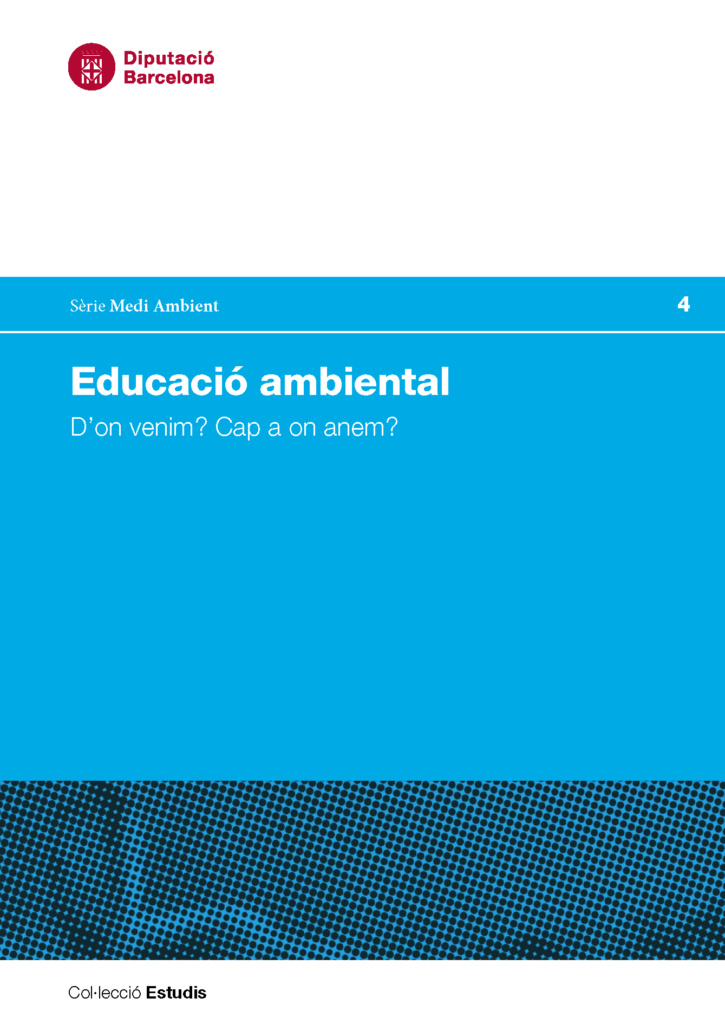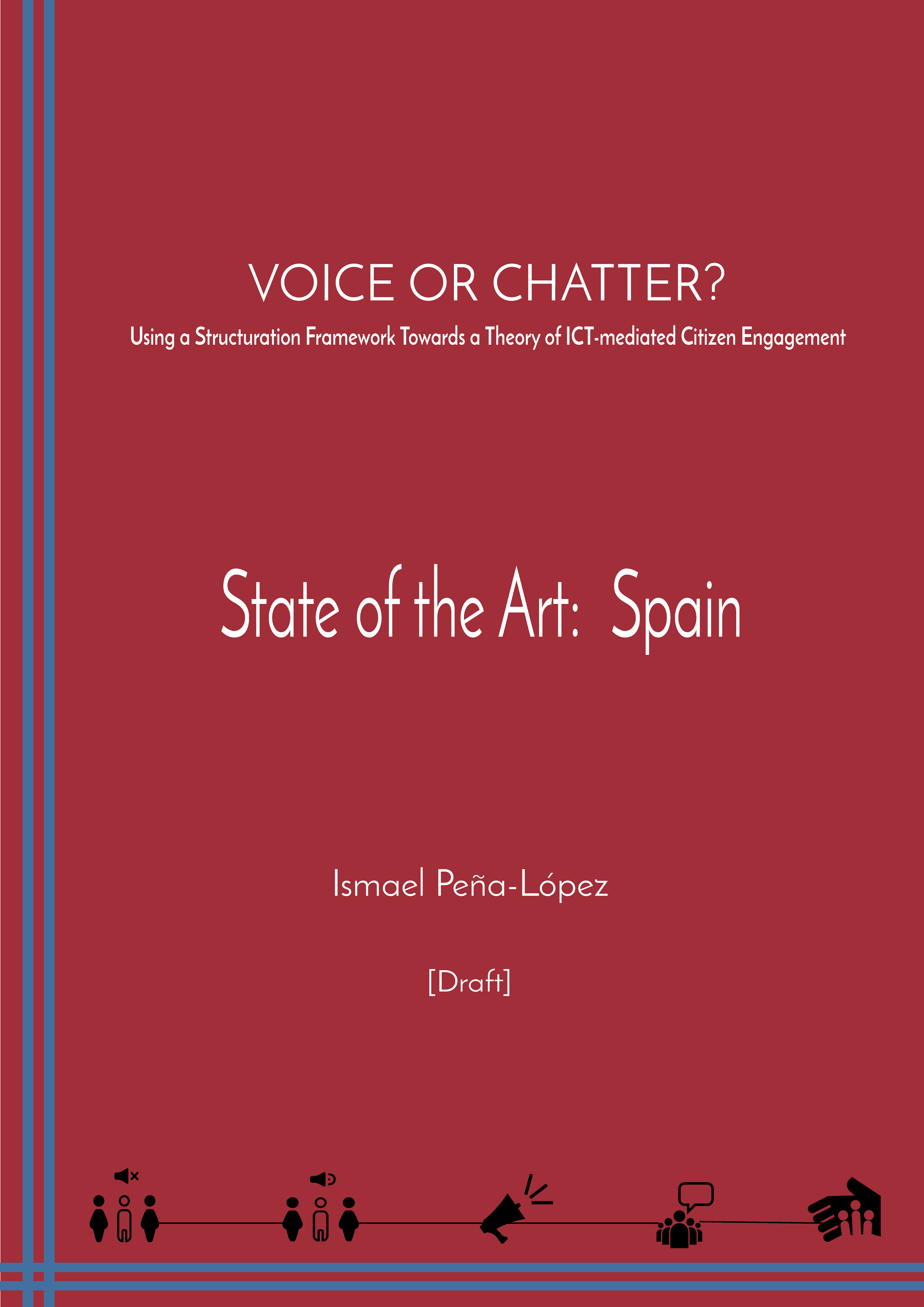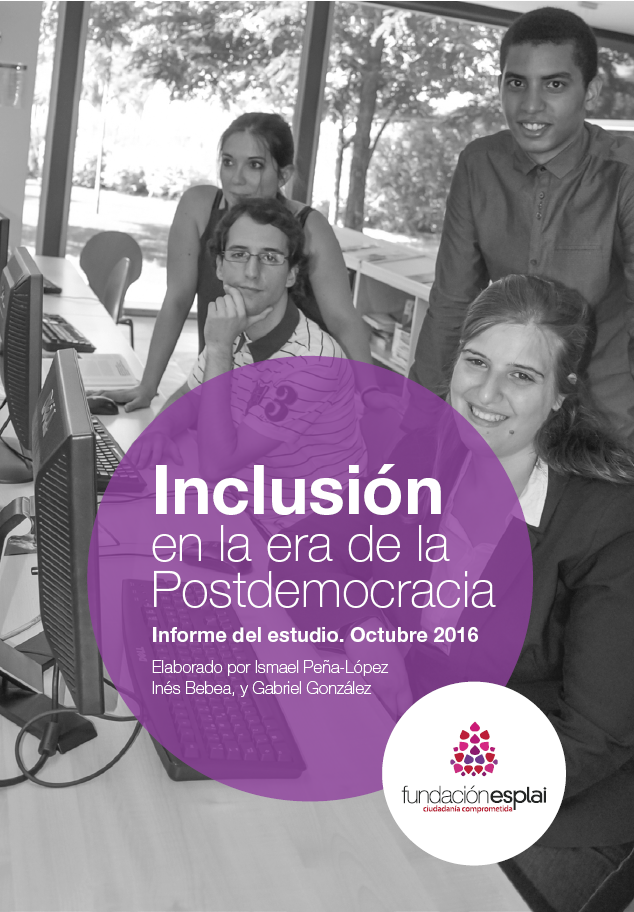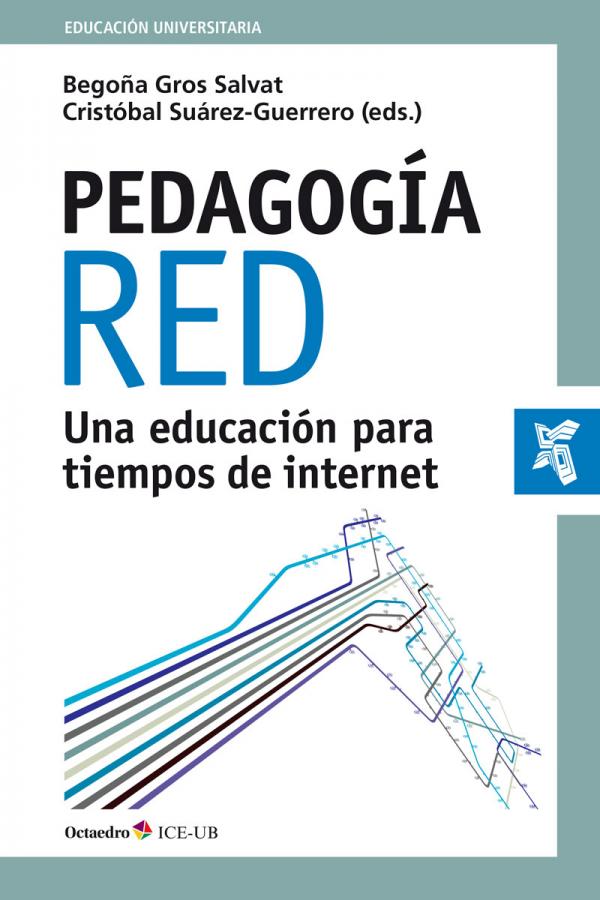A year ago, Can Kurban, Maria Haberer and I presented a communication at the conference IDP2016 – Internet, Law and Politics. Building a European digital space, and it was published in its proceedings as What is technopolitics? A conceptual scheme for understanding politics in the digital age.
Now, an improved version of that paper has been published at the IDP. Journal of Internet, Law and Politics, in its issue #24.
Abstract
In this article we seek to revisit what the term ‘technopolitical’ means for democratic politics in our age. We begin by tracing how the term was used and then transformed through various and conflicting adaptations of ICTs (Information and Communication Technologies) in governmental and civil organizations and grassroots movements. Two main streams can be distinguished in academic literature: studies about internet-enhanced politics (labelled as e- government) and politics 2.0 that imply the facilitation of existing practices such as e-voting, e-campaigning and e-petitioning. The second stream of the internet-enabled perspective builds on the idea that ICTs are essential for the organization of transformative, contentious politics, citizen participation and deliberative processes. Under a range of labels, studies have often used ideas of the technopolitical in an undefined or underspecified manner for describing the influence of digital technologies on their scope of investigation. After critically reviewing and categorizing the main concepts used in the literature to describe ICT-based political performances, we construct a conceptual model of technopolitics oriented at two contra-rotating developments: Centralization vs. Decentralization. Within a schema consisting of the five dimensions of context, scale and direction, purpose, synchronization and actors we will clarify these developments and structure informal and formal ways of political practices. We explain the dimensions using real-world examples to illustrate the unique characteristics of each technopolitical action field and the power dynamics that influence them.
Downloads
For the last year I have been taking part of the research project Voice or Chatter?, part of Making All Voices Count, a programme working towards a world in which open, effective and participatory governance is the norm and not the exception, and focusing global attention on creative and cutting-edge solutions to transform the relationship between citizens and their governments.
I had already released three outputs resulting of the work on this project:
A new article has been published from the same project. It is a shorter version of the political and regulatory context, now in Spanish. It has appeared in Revista Internacional de Pensamiento Político (issue #11), within a monograph on the digital revolution, technopolitics and digital democracy edited by Ramón Soriano and Francisco Jurado — to whom I owe much gratitude, not only for the invitation to submit a paper, but for their idea to curate such an interesting monograph.
Below appear the abstract of the article in English and Spanish and the download of the full text in Spanish.
Abstract in English
The Spanish local elections in 2015 brought to many Spanish cities what has been labeled as “city councils of change”: city councils whose mayors and governing representatives come from parties emerging from the 15M Spanish Indignados Movement. This research focuses on the socio-political environment where this phenomenon takes place, specifically in Madrid and Barcelona, the two major cities of the state and featuring “city councils of change”. Our research revisits e-participation since the beginnings of the XXIst century onwards and most especially in the aftermath of the 15M Movement, proposing that recent ICT-based participation initiatives in such in municipalities could be far from just polling the citizens and be, instead, the spearhead of a technopolitics-aimed network of cities.
Abstract in Spanish
Las elecciones municipales de España en 2015 trajeron a muchas ciudades españolas lo que se ha calificado como “ayuntamientos de cambio”: ayuntamientos cuyos alcaldes y representantes en el gobierno provienen de partidos emergentes del Movimiento del 15M. Esta investigación se centra en el entorno sociopolítico en el que se desarrolla este fenómeno, concretamente en Madrid y Barcelona, las dos mayores ciudades del estado y con “ayuntamientos de cambio”. Nuestra investigación revisita la e-Participación desde los inicios del siglo XXI y, sobre todo, tras las secuelas del 15M, proponiendo que las recientes iniciativas de participación basadas en las TIC en los municipios podrían estar lejos de ser meras encuestas para los ciudadanos para ser, en cambio, la punta de lanza de una red de ciudades tejida con prácticas tecnopolíticas.
Downloads
In 2009-2010, some colleagues and I did a small research for the Diputació de Barcelona (Barcelona County Council) on new ways of political participation enabled by ICTs. The following year, my colleague Albert Padró-Solanet and I adapted some of that research and turned into a set of training sessions for city council officers in the field of communication, participation and environment, the latter being a field in which collaboration between institutions and organizations at the city level is crucial.
The Technical office of education and environmental promotion of the Barcelona County Council has just issued a book, Environmental education. Where have we come from? Where are we going?, in which we were invited to write a book chapter on how environmental education and awareness raising on environmental issues has changed due to the adoption of ICTs.
Our chapter —Environmental education in a world of networks— begins with an introduction to the digital revolution and the kinds of tools and applications that are more deeply changing information and communication between citizens and between citizens and public administrations. Of course, the list of specific applications will quickly be outdated, but the reflections around them and their categorization we believe will still be useful in the following years. After the digital revolution and some tools, we talk about the communication plan, how to identify our targets, how to campaign or how to think of communication as a way of building up a project-centered personal learning environment (PLE — in this case, the P would stand for project instead of personal). The chapter ends with some practical cases and some conclusions or things to keep in mind.
The book — and the book chapters — is published in Catalan, Spanish and English, and our chapter can be downloaded below.
Downloads
Book chapter:
Peña-López, I. & Padró-Solanet, A. (2017). “
Environmental education in a world of networks”. In Diputació de Barcelona,
Environmental education. Where have we come from? Where are we going?, Chapter 11, 544-559. Col·lecció Estudis. Sèrie Medi Ambient, 4. Barcelona: Diputació de Barcelona.
Capítulo del libro:
Peña-López, I. & Padró-Solanet, A. (2017). “
Educación ambiental en un mundo de redes”. En Diputació de Barcelona,
Educación ambiental. ¿De dónde venimos? ¿Hacia dónde vamos?, Capítol 11, 397-414. Col·lecció Estudis. Sèrie Medi Ambient, 4. Barcelona: Diputació de Barcelona.
Capítol del llibre:
Peña-López, I. & Padró-Solanet, A. (2017). “
Educación ambiental en un mundo de redes”. A Diputació de Barcelona,
Educació ambiental. D’on venim? Cap a on anem?, Capítol 11, 231-257. Col·lecció Estudis. Sèrie Medi Ambient, 4. Barcelona: Diputació de Barcelona.
This report aims at providing an overview of the normative and institutional state of art of ICT-mediated citizen participation in Spain. The first section provides an overview of the political and civic liberties framework in Spain. In the second section the landscape of ICT mediated citizen engagement is mapped. In the third section, the report engages with implications of technology mediations for deliberative democracy and transformative citizenship.
This report is the outcome of a collaboration between IT for Change and Ismael Peña-López, School of Law and Political Science, Universitat Oberta de Catalunya under a research project titled Voice or Chatter? Using a Structuration Framework Towards a Theory of ICT-mediated Citizen Engagement.
The State of the Art reports provide an overview of the normative and institutional state of art of ICT-mediated citizen participation in various countries. They provide an overview of the political and civic liberties framework, the landscape of ICT-mediated citizen engagement; and delve into the implications of technology mediations for deliberative democracy and transformative citizenship.
A former version of this report was released as a working paper as Technopolitics, ICT-based participation in municipalities and the makings of a network of open cities. Drafting the state of the art and the case of decidim.Barcelona.
About the Project
This research has been produced with the financial support of Making All Voices Count. Making All Voices Count is a programme working towards a world in which open, effective and participatory governance is the norm and not the exception. This Grand Challenge focuses global attention on creative and cutting-edge solutions to transform the relationship between citizens and their governments. Making All Voices Count is supported by the U.K. Department for International Development (DFID), U.S. Agency for International Development (USAID), Swedish International Development Cooperation Agency, and Omidyar Network (ON), and is implemented by a consortium consisting of Hivos, the Institute of Development Studies (IDS) and Ushahidi. The programme is inspired by and supports the goals of the Open Government Partnership.
Acknowledgements
The author wants to thank the guidance, thorough review and suggestions made by Deepti Bharthur, Nandini Chami and Anita Gurumurthy from IT for Change. The author also wants to thank the indispensable help from Arnau Monterde from UOC/IN3.
Inés Bebea (from Ondula), Gabriel González (from Fundación Esplai) and I (with the help of Juan Sánchez, also from Fundación Esplai) have just issued our report Inclusión en la era de la Postdemocracia (Inclusion in the age of post-democracy).
The origins of the proposal “Inclusion in the age of postdemocracy” come from the debate held during the day of the plenary meeting of the Advisory Council of Fundación Esplai on Committed Citizenship, held on January 20, 2015. In this debate took part the Advisory Board, the Board of Trustees and the technical team of the organization, and during the event the participants identified the challenges that technology is creating at the social level at the present time, and to which the Fundación Esplai Foundation should respond in order to collaborate in the the construction of a technologically empowered citizenry that makes a critical, responsible and useful use in the pursue of their own personal development and that of one’s community.
The project takes as its starting point a basic document, which sets out the concrete objectives to advance in this line:
- Present the state of the situation on the practices of active citizenship in the areas of health, education and democracy.
- Propose consensuses that group different actors and sensitivities towards a common strategy and action lines.
- Design action lines for the promotion of active citizenship based on an intensive, open and community-based use of ICTs.
Between July and October 2016 Fundación Esplai launched a proposal to study and debate the role that Information and Communication Technologies play in social inclusion and in the active exercise of citizenship, as essential tools for access to education, health and democratic participation. The work proposal, which emphasizes the analysis of the call third-level digital divide, included a participation process to which a broad sector of the citizenry was invited, especially those more linked to Fundación Esplai initiatives: members of the Advisory Board, Board of Trustees and professional staff of the Fundación Esplai, organizations of the of the Red Conecta and associated networks, professionals in the ICT sector, Education and Social Inclusion as well as private individuals interested in the topic.
Download:
Professors Begoña Gros and Cristóbal Suárez have edited a new book that has just been released, Pedagogía red. Una educación para tiempos de internet (Networked pedagogy. An education for the Internet age).
I have been invited to write a chapter for the book on how can we learn in networks or as networks. The easiest way to answer the question would have been to come up with a list of tools… which would have been outdated the day after the book saw the light. Instead, I focused on how “educational institutions” (understood in a very broad way: the textbook, the teacher, the classroom, the library, evaluation, etc.) could be opened, unfolded so that their momentum gathered along the years could be disrupted and actors and tasks profoundly changed.
Besides thanking both Begoña Gros and Cristóbal Suárez for their invitation, I also very heartily have to thank Toni Aguilar, as he was the first one to force me to think in this terms when he invited me to do the talk ICT and education:: evolution of education, revolution in learning, which I have repeatedly given after that — and finally became a book chapter, as now can be seen. Gràcies Toni!
The book is in Spanish, the chapter is called ¿Con qué aprender en red? Estrategias y herramientas para la abertura y disrupción de las instituciones educativas (Networked learning: strategies and tools to open and disrupt educational institutions) and here goes the abstract and the bibliography I used.
Abstract
Cuando se habla de qué herramientas utilizar para aprender en red, es fácil acabar utilizando la herramienta por la herramienta. A pesar de que nos repetimos a nosotros mismos cual mantra que las herramientas son solamente instrumentos para conseguir unos fines – en este caso de aprendizaje – nos ocurre una y otra vez que ponemos las herramientas en el lugar de los fines.
Ello ocurre incluso en los casos donde nos dotamos de categorizaciones o de verdaderas ontologías para asignar cada herramienta al cajón del que solamente saldrá cuando tengamos claro su papel instrumental.
En este capítulo vamos a evitar caer en la tentación prescindiendo, por completo, de una caja de herramientas. O de una lista. O de una categorización. Todo un reto para lo que, a primera vista, debería ser un despliegue de estrategias y herramientas para el aprendizaje en red.
En su lugar, nos centraremos en tejer la red de aprendizaje. Y lo haremos desmontando, desplegando, abriendo las instituciones que, hasta hoy, siguen protagonizado (y con mucho éxito, no querríamos perder esto de vista) la enseñanza. Y el aprendizaje, a menudo confinado a esas instituciones.
Más que en las herramientas, pues, queremos poner bajo el foco la disrupción que las instituciones educativas están sufriendo y que, en parte, viene de la mano de determinadas estrategias y herramientas. Y es analizando las disrupciones que se están dando en el papel de 10 instituciones educativas que hemos seleccionando que veremos cómo actúan determinadas estrategias y herramientas.
Bibliography
Castañeda, L. & Adell, J. (2013). “
La anatomía de los PLEs”. In Castañeda, L. & Adell, J. (Eds.),
Entornos Personales de Aprendizaje: claves para el ecosistema educativo en red, Capítulo 1, 11-27. Alcoy: Marfil.
Hollands, F.M. & Tirthali, D. (2014).
MOOCs: Expectations and Reality. New York: Center for Benefit-Cost Studies of Education Teachers College, Columbia University.
Meishar-Tal, H., Kurtz, G. & Pieterse, E. (2012). “
Facebook Groups as LMS: A Case Study”. In
International Review of Research in Open and Distributed Learning, 13 (4). Edmonton: Athabasca University.
Peña-López, I. & Cerrillo i Martínez, A. (2011). “
Herramientas 2.0 para el desarrollo de competencias profesionalizadoras”. In Cerrillo i Martínez, A. & Delgado García, A.M. (Coords.),
Las TIC al servicio de la docencia del Derecho en el marco del EEES, 89-102. Actas de la II Jornada sobre Docencia del Derecho y Tecnologías de la Información y la Comunicación, 6 de junio de 2011. Barcelona: Huygens.
Peña-López, I. & Cerrillo i Martínez, A. (2012). “
Microblogging en el aula. De la información a la participación”. In Cerrillo i Martínez, A. & Delgado García, A.M. (Coords.),
La innovación en la docencia del Derecho a través del uso de las TIC, 143-157. Actas de la III Jornada sobre Docencia del Derecho y Tecnologías de la Información y la Comunicación, 8 de junio de 2012. Barcelona: Huygens.
Stacey, P. (2014). “
Pedagogy of MOOCs”. In
International Journal for Innovation and Quality and in Learning, (3), 112-115. Brussels: EFQUEL.
Yousef, A.M.F., Chatti, M.A., Schroeder, U., Wosnitza, M. & Jakobs, H. (2014). “
MOOCs – A Review of the State-of-the-Art”. In Zvacek, S., Restivo, M.T., Uhomoibni, J.O. & Helfert, M.,
CSEDU 2014 – Proceedings of the 6th International Conference on Computer Supported Education, Volume 3, 9-20. Barcelona: SciTePress.







